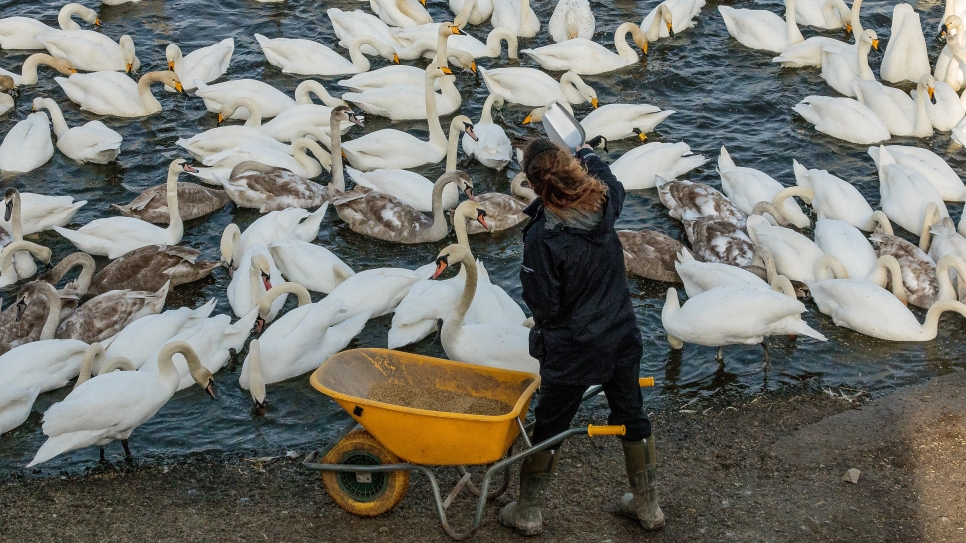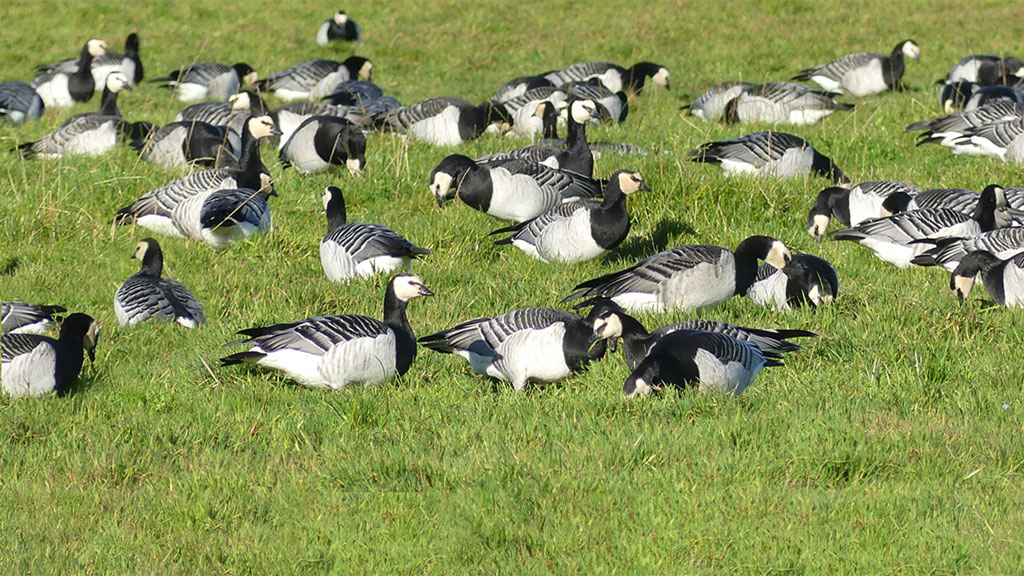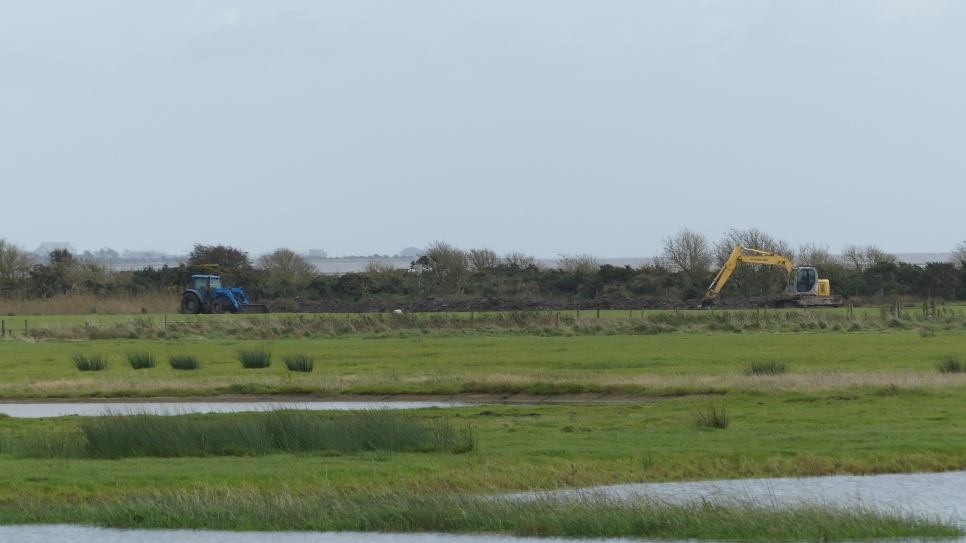The gall of it all!
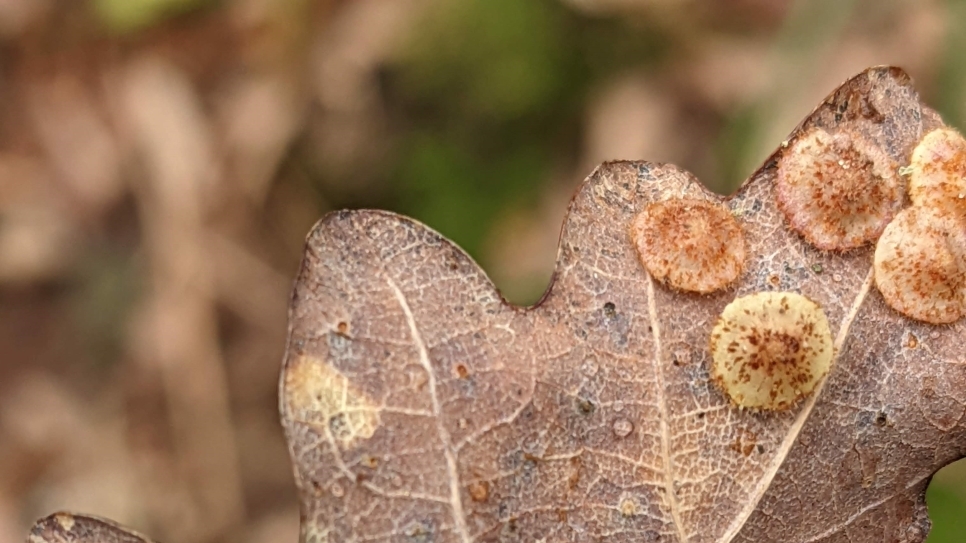
Galls are weird and wonderful growths that develop on plants after a parasitic fungi, bacteria, virus, or insect has invaded and they can be found in over half of all plant families. Once the egg or pathogen has penetrated the plant’s growing tissue, the plant will start to develop a gall around the affected area. The gall causer will send out chemicals or trigger a response in a way that causes the plant to reorganise its cells into an abnormal growth. Many galls are unique looking and specific to a species of plant and often the causer can be identified by looking at the growth.
One of the first I’ve noticed on the reserve is the oak apple gall, which as the name suggests is formed on oak trees and they look like (you guessed it) apples! A very small and unsuspecting organism called Biorhiza pallida, also known as the ‘oak apple gall wasp’, are the cause of these large pithy growths on oak buds and leaves. This little creature has a complicated life cycle that alternates between producing a sexual generation of male and female individuals in spring and an asexual generation of females that are able to reproduce without a male in late summer. Both generations cause different galls in different places on the tree. The sexual generation emerge from the oak apple galls like those pictured and the asexual wasps emerge from galls that form in the oak tree roots.
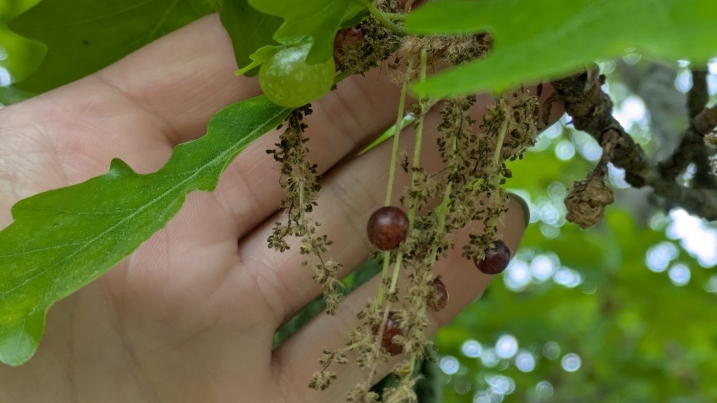 Sexual generation emerging from oak apple galls
Sexual generation emerging from oak apple galls
Quick aside: you may not think it from looking at them but oak galls have played a role in paving the way for civil liberties and individual rights. The Magna Carta, a historically important document for the United Kingdom which set out that all freemen had the right to a fair trial and that not even the King was above the law, was written in iron gall ink in 1215. One of main constituents of the ink is the tannins from oak galls!
The common spangle gall is another you can easily find on site. I came across it in some leaf litter last Autumn. These disc shaped galls are the result of another parasitic wasp called Neuroterus quercusbaccarum, laying their eggs on the underside of oak leaves. They have a similar life cycle to that of the Biorhiza pallida, where the two generations alternate between asexual females and male and females that reproduce sexually.
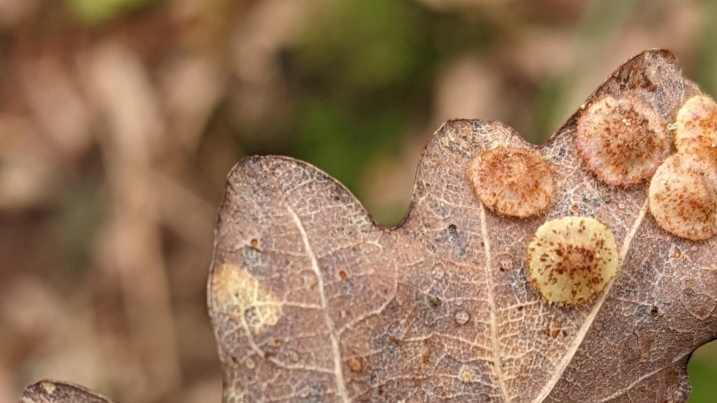 Common spangle gall containing the asexual female generation of wasps
Common spangle gall containing the asexual female generation of wasps
One gall which you will most likely have come across, or misidentified as a bird’s nest, is witch's broom. It can be found on a variety of trees most commonly being seen on birch. It occurs when a pathogen, usually fungal, infects the buds and/or developing shoots of the tree to stimulate an eruption of stunted twigs which eventually form a nest-like structure of densely packed shoots. The fungus can then consume the fresh shoots it has manipulated the tree into growing. As the name suggests, many cultures believed that these growths were the work of witches. While some saw the tufts of twigs as magical tools that had been abandoned in the canopy of the trees, others saw them as marks of good or evil.
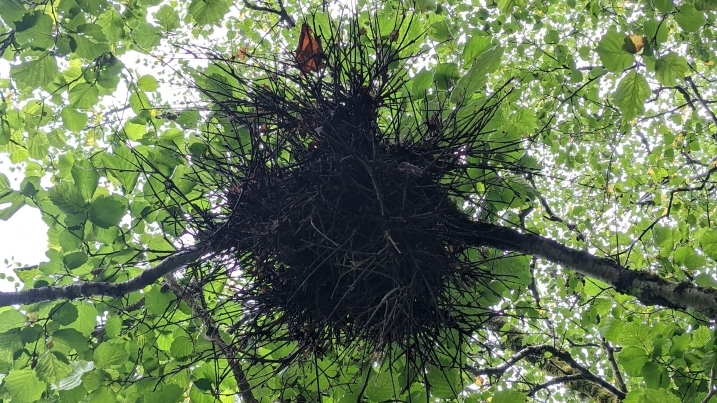 Example of a witches broom growing on a hazel tree off the coast of Skye
Example of a witches broom growing on a hazel tree off the coast of Skye
Words and pictures by Annabelle Gurney
